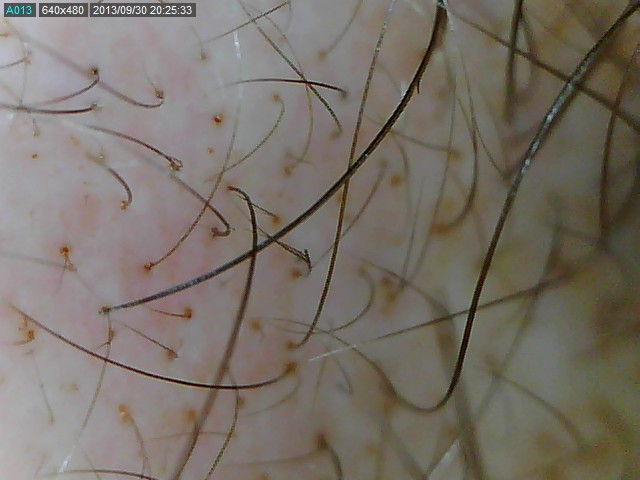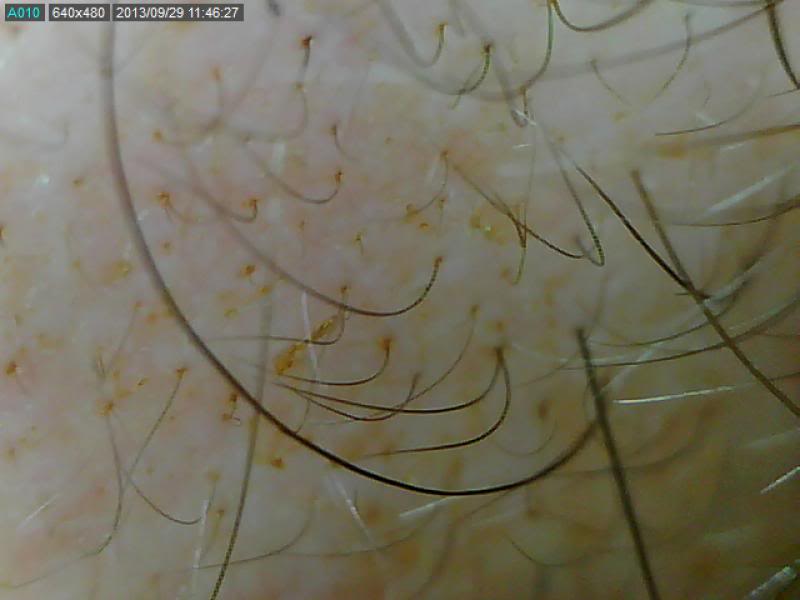Alright, I am going to document with different pictures my hair loss journey.
First, my genetic makeup, I am bi-racial african-american/white, so my hair phenotype is the crazy afro a la beyonce or lenny kravitz, kind of like that when it used to grow crazy:
As far as hairline goes, it is very similar to Kobe Bryant's, in fact, it is almost identical, very high, never receded, just thinned out of nowhere (like kobe did as well):
Brothers, dad and my son all have the same high hairline. So that gives you a little picture of how my hair and hairline looked pre-balding.
Here is my hairline in my high teens:
https://www.dropbox.com/s/smhlvh3k3hns8oa/beforeBalding2.jpg
Here is my crazy afro all growned out (note, these photos are very old, so quality may not be the best, and some of them are actually scans of printouts as fancy digital cams weren't a commodity back in the days

.
https://www.dropbox.com/s/70xg5skn3pnyli3/afroBeforeBalding.jpg
The above is the last afro I could successfully pull, with every subsequent hair cycle, the top kept getting thinner and thinner. You can clearly see in the picture below that the top is noticeably thinner, and it kept going.
https://www.dropbox.com/s/lzic6e56p6juikk/BaldingGettingObvious2.jpg
Below, I cut my hair because the afro wasn't fooling anyone anymore ;(. You can see the sides already thicker and growing way faster than the top.
https://www.dropbox.com/s/fqbie9ghsoz78j5/BaldingMoreShowingSidesLongerThanTop2.jpg
Below, as a kept shaving my head, bald patches can be seen getting obvious, the top is growing as a snails pace. Look at dat shiny reflection on top :woot:
https://www.dropbox.com/s/emu2uox5ong6kxj/baldingShowingMore.jpg
In the picture below, I am totally fcked!! the top will simply not grow past half an inch, even waiting a whole year, most hair are thin an vellus like with no dark pigment at all, the hair on top will simply not grow, period.
ALL IMAGES BELOW ARE are between august and september, I started treating my hair exactly feb15, never used finasteride, started minoxidil the first week of august after the dermaroller thing started, so my regrowth can't be due to minoxidil either (though the compounding effect with dermarolling is showing good things so far).
Before I started treatment, I only had to trim the sides
every week or so to get rid of the annoying horseshoe pattern, the top not growing no matter what, I didn't need to shave it.
Around the end of June the top kept growing darker, terminal looking hair slowly, so I had to start trimming both sides and top to have something cosmetically decent.
This is after I started dermarolling, minoxidil can clearly be seen dried around the hairline, it also makes my scalp and hair look whitish.
https://www.dropbox.com/s/15olt9ga542apyb/another.jpg
Below is grown slightly, you see the top is still composed of non-fully pigmented terminal hair, but it is definitely semi-terminal and grows at a little faster rate, nowhere near how fast the sides grow though
https://www.dropbox.com/s/jl61we456eh0sro/last.jpg
Below is a clearer view of the top
directly under light, close up look with hair cut very short, you can see the sides still way thicker than the top, semi terminal and few patches of terminal hair can be seen all over, what you can't see is the thousands of thin/vellus looking peach fuzz all over. What is also happening is that the scalp is getting thicker and tiny black hair follicles ready to sprout are all over seems to be spreading all over the top and that is changing the texture of the scalp
Below is the longest I have grown it so far, lighting isn't the best though, top still look thin compared to the sides, but I came from literally nothing, so I can't be complaining, darn it, the forum only allows attaching 8 picture per post, so I am attaching this a different way:
https://www.dropbox.com/s/28smibu8rx3eqvc/grownedSlightly.jpg
Scalp can still be seen through the top because of not having fully terminal hair all over. I wasn't going to post anything till around the january timeframe because I wanted to assess how effective the derma rolling works (started early august). Time will tell but I am happy so far. I came from
nearly a norwood 7, I say nearly because random peach fuzz would still grow half an inch but the growth was stunted. Am I happy? heck yes, but I think I can improve to the point of full recovery with time. What I noticed so far is that my balding is going away exactly in reverse order. What I attribute most my success also is consistency.
This is the major problem with most people in my opinion. They will try every single treatment in the world as soon as they hear something good about it. They jump from topical to topical every month or so and never consistent with anything. They will quickly abandon an existing treatment that maybe doing incredible things (not yet noticeable) as soon as they read a post from some random dude on the internet claiming they have been on the same treatment since they were in their mother's womb and it didn't do $hit for them.
I think a lot of things work given adequate consistency, heck, I think even vigorously scratching your head with your nail might give you some results if you are consistent enough (I think odabalk or someone else mentioned that is what a friend of theirs does, this was months back early in this thread). My point is,
treat your hair
or do nothing, don't be wishy washy in what you are doing, pick something smart and be consistent:
Revelation 3:15-16




